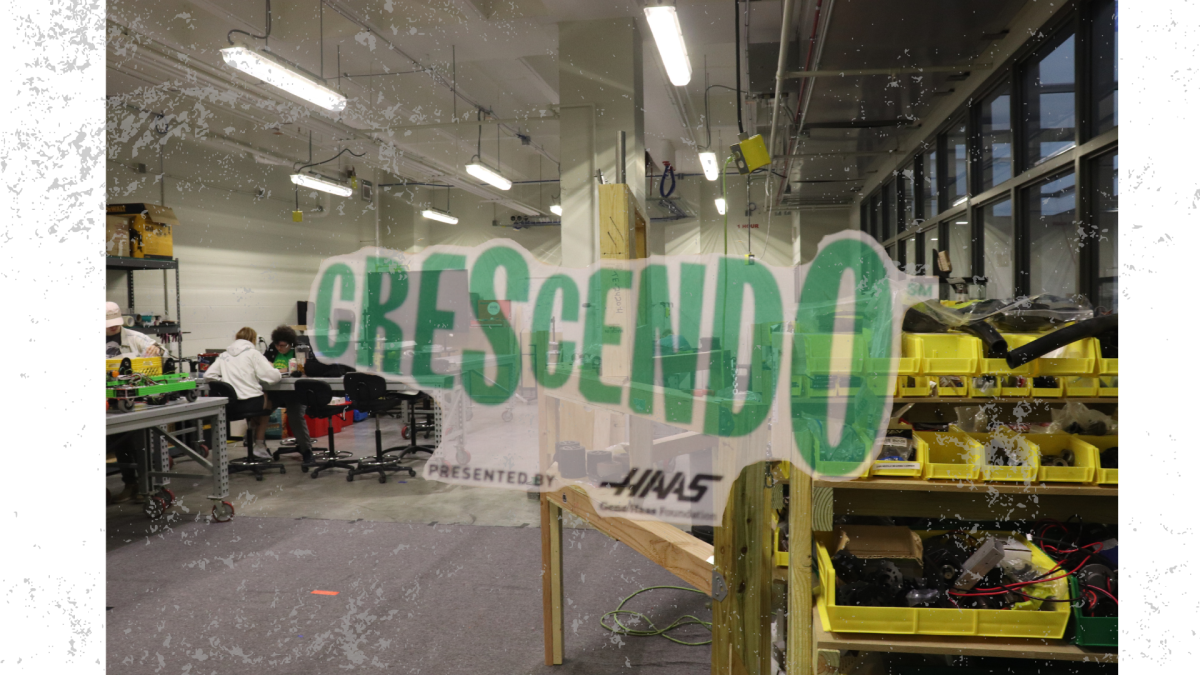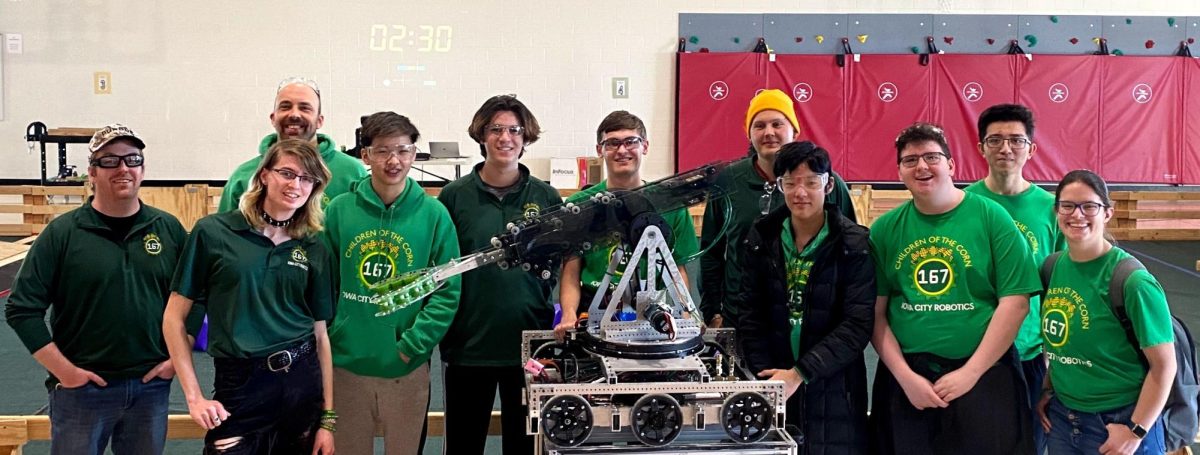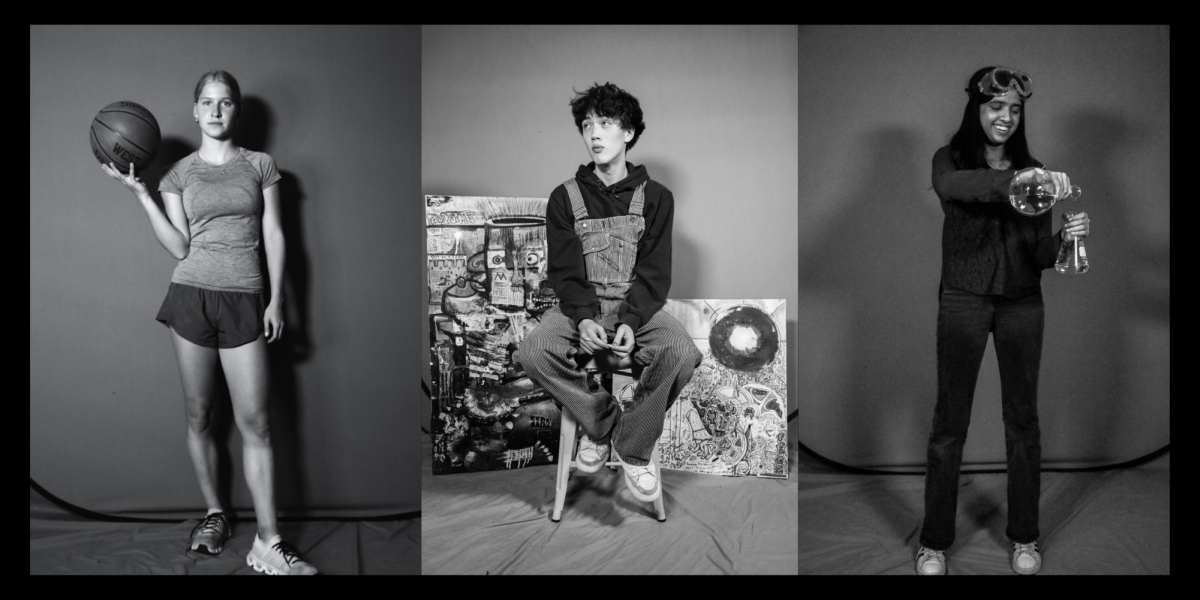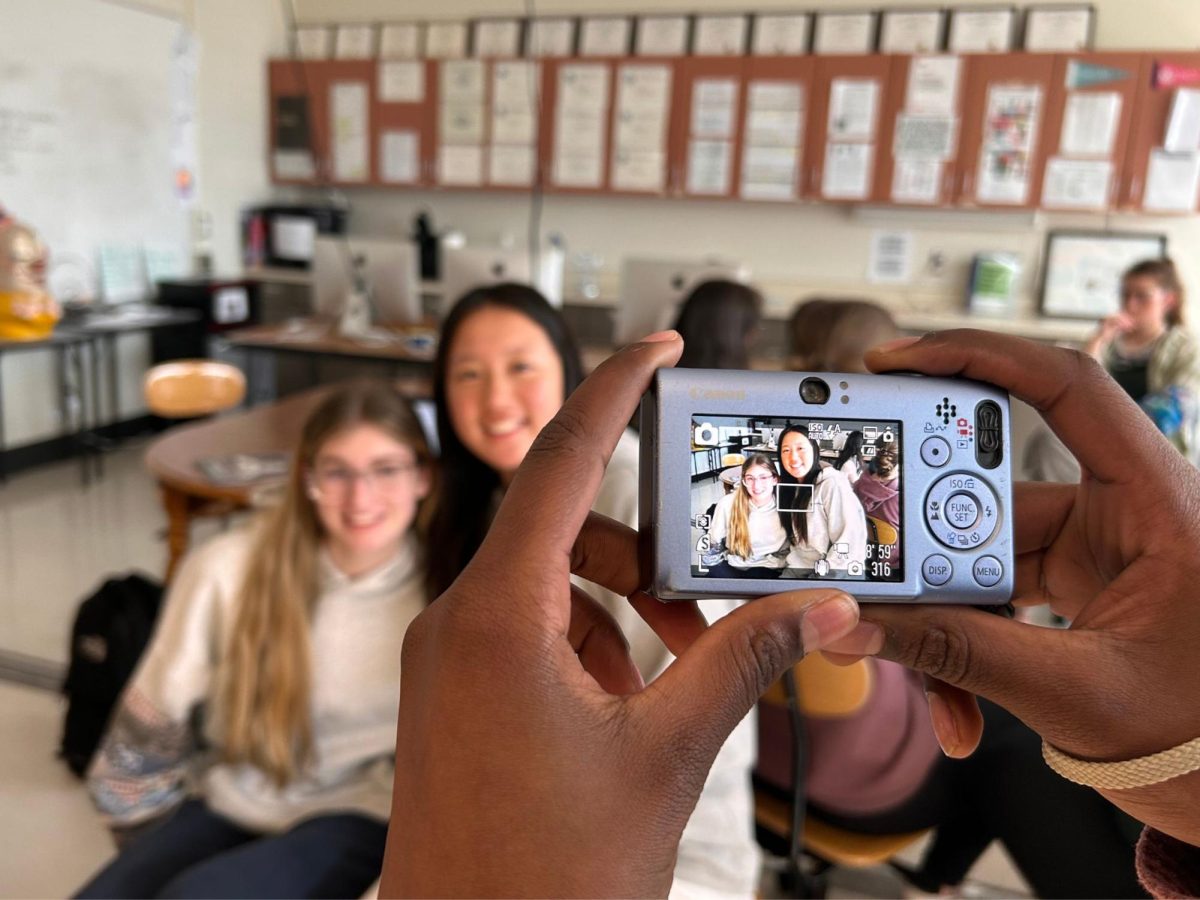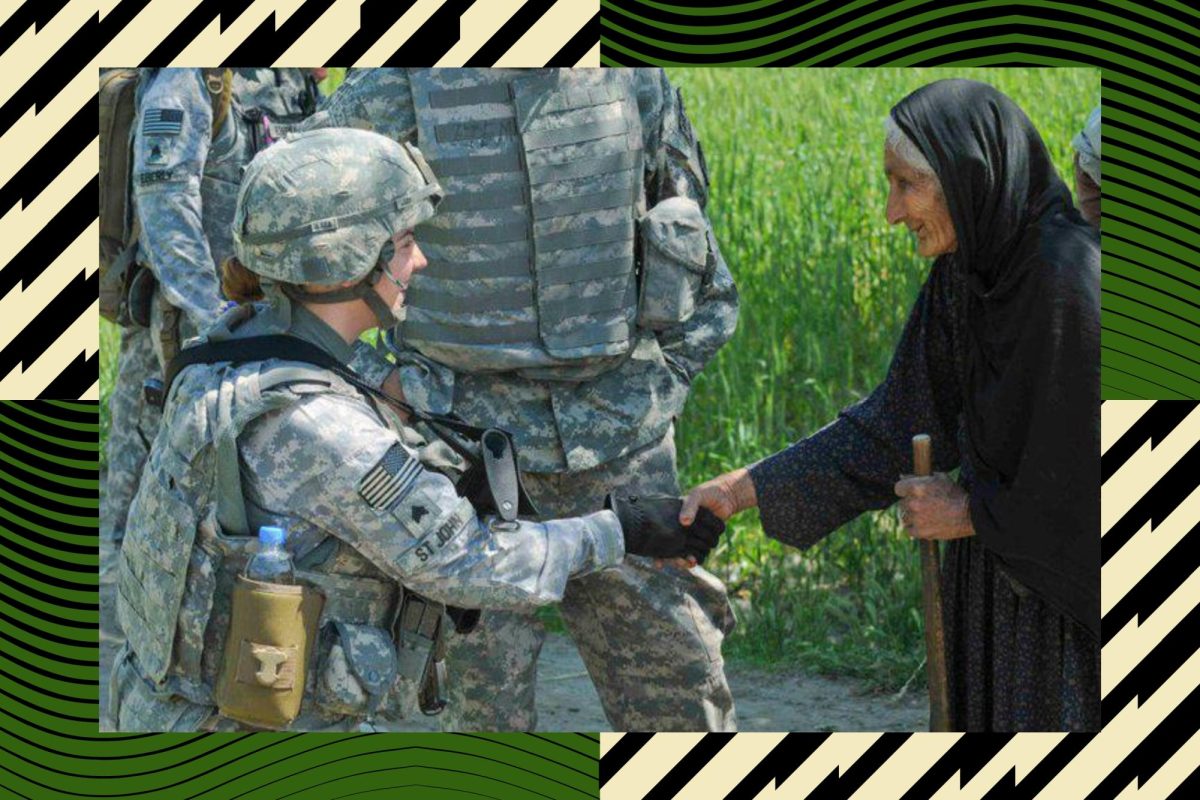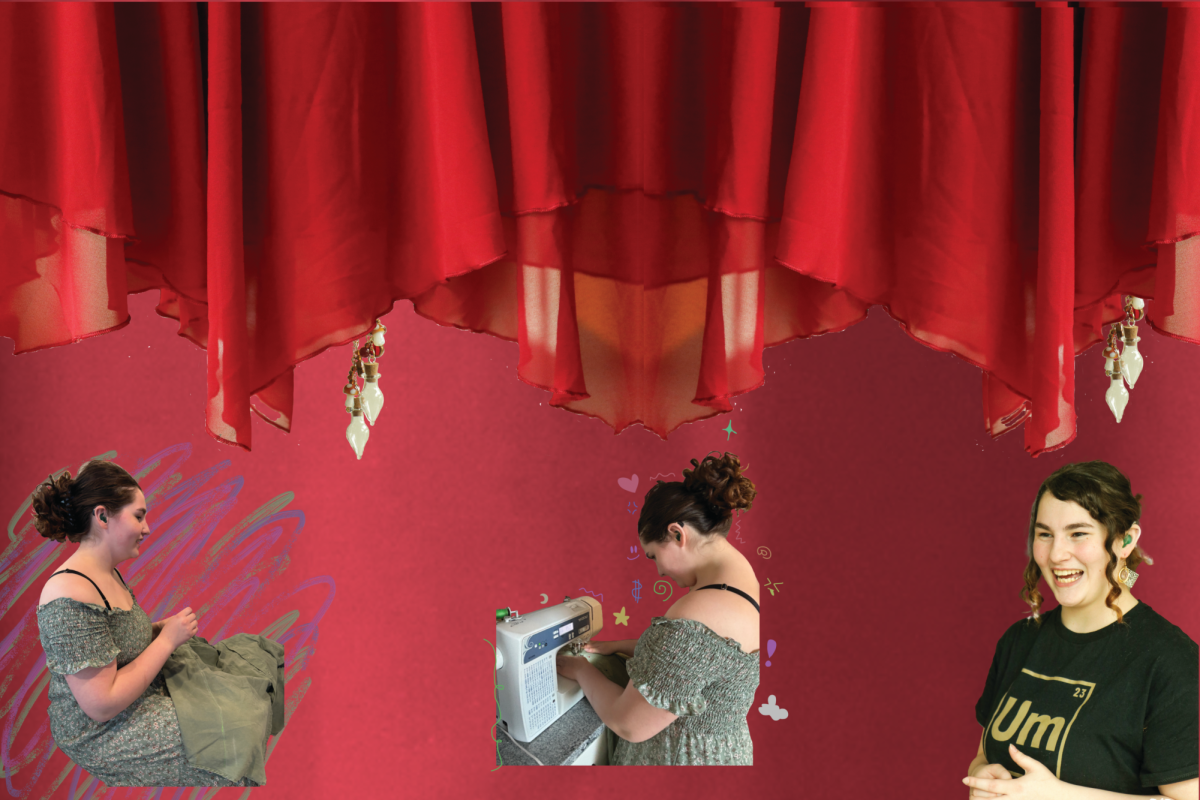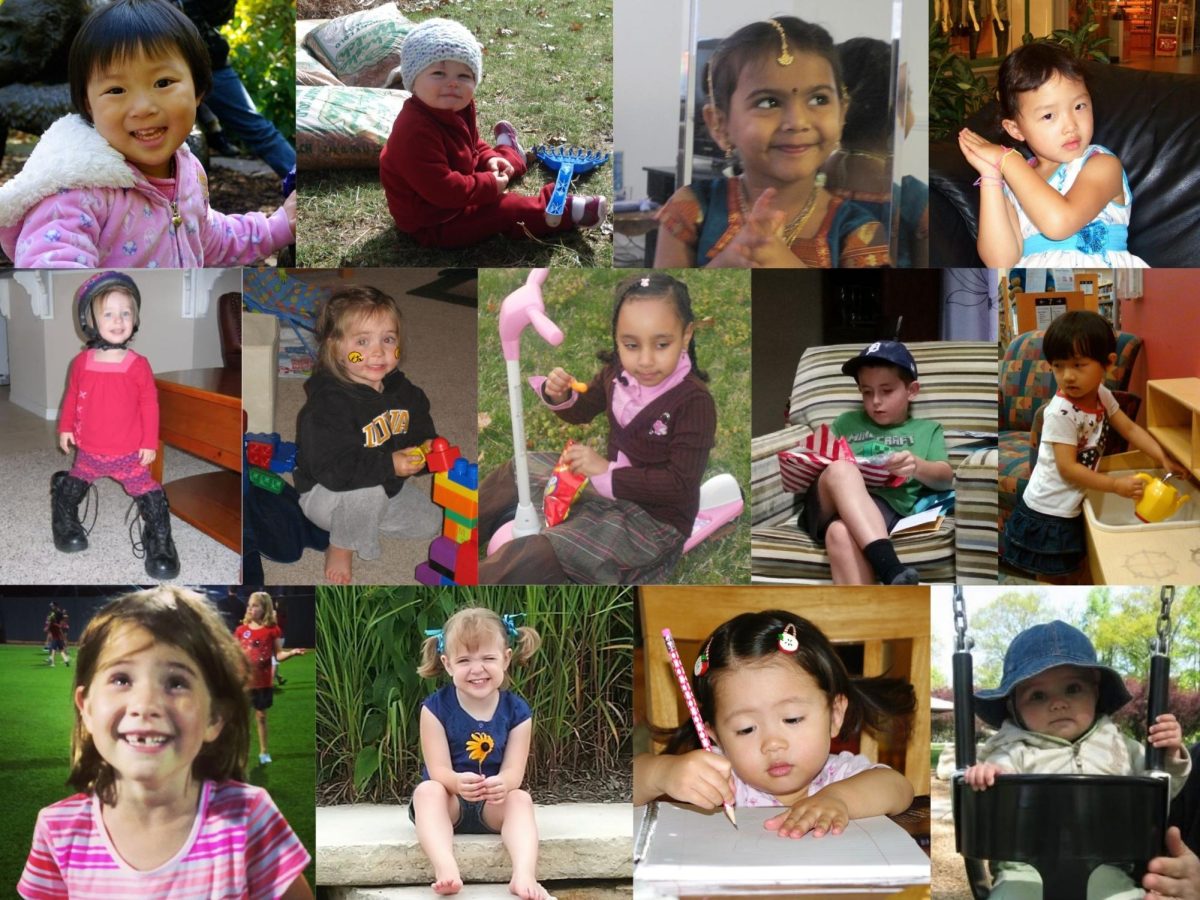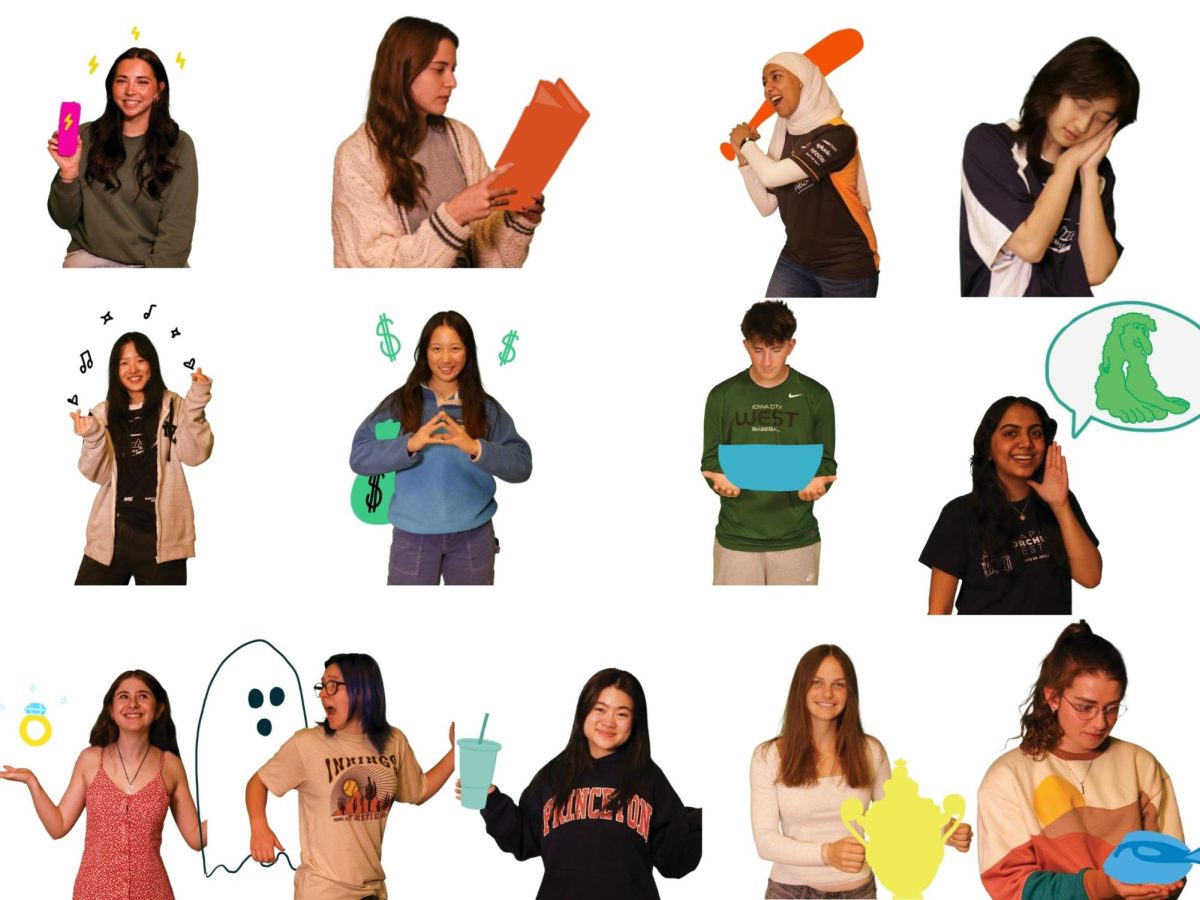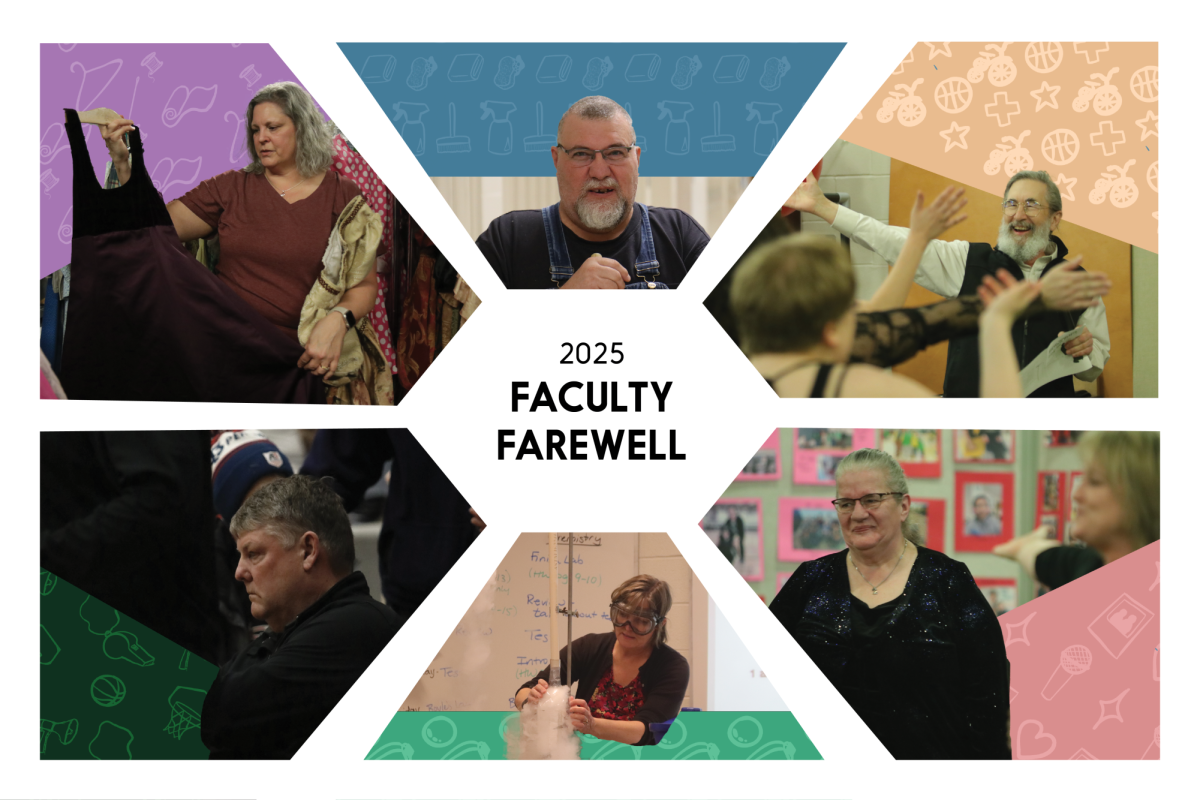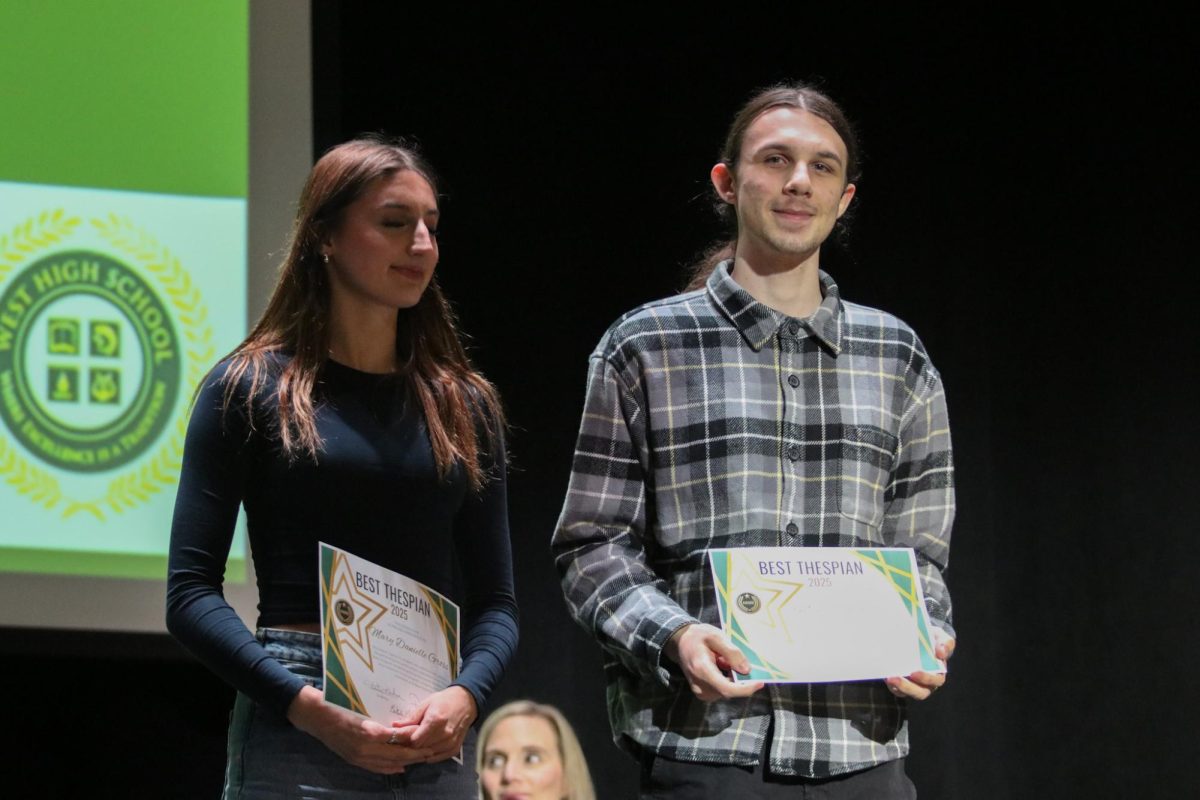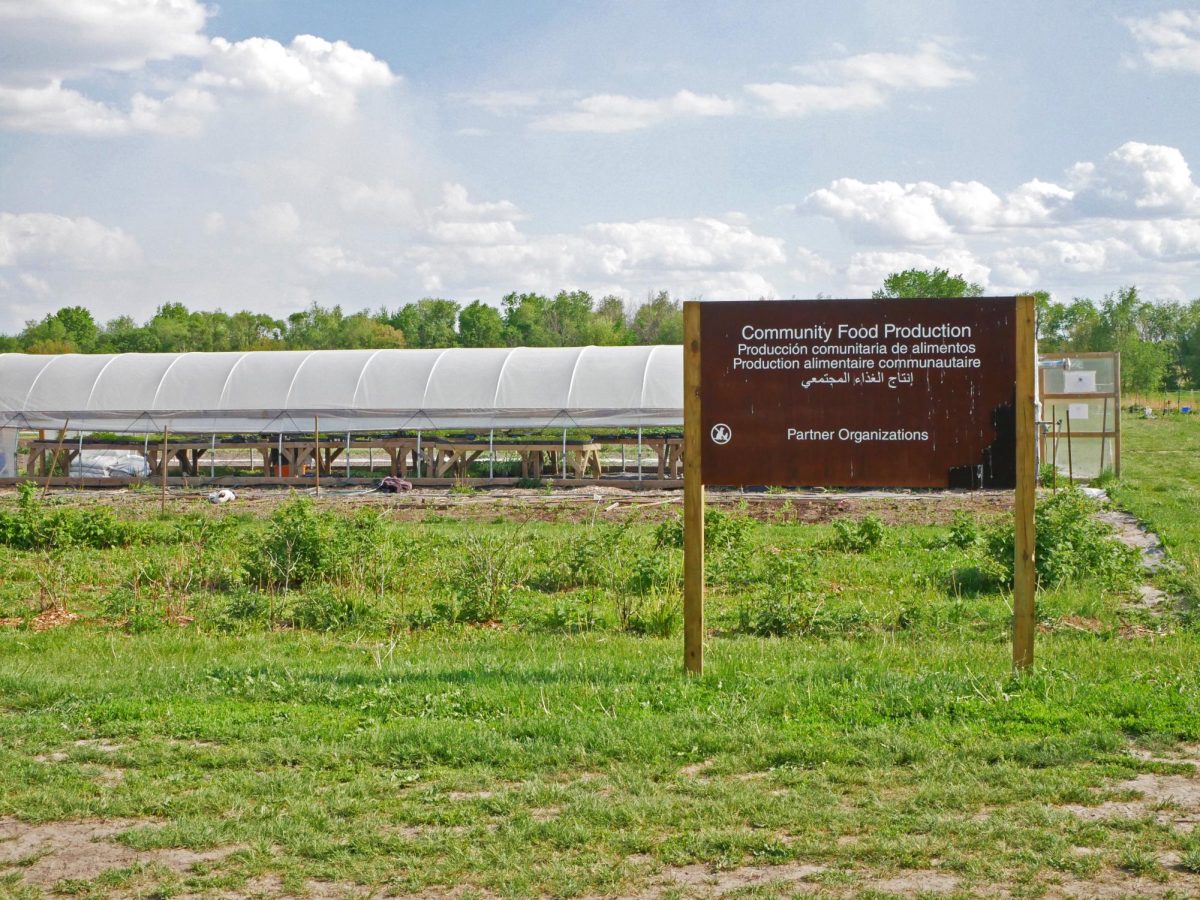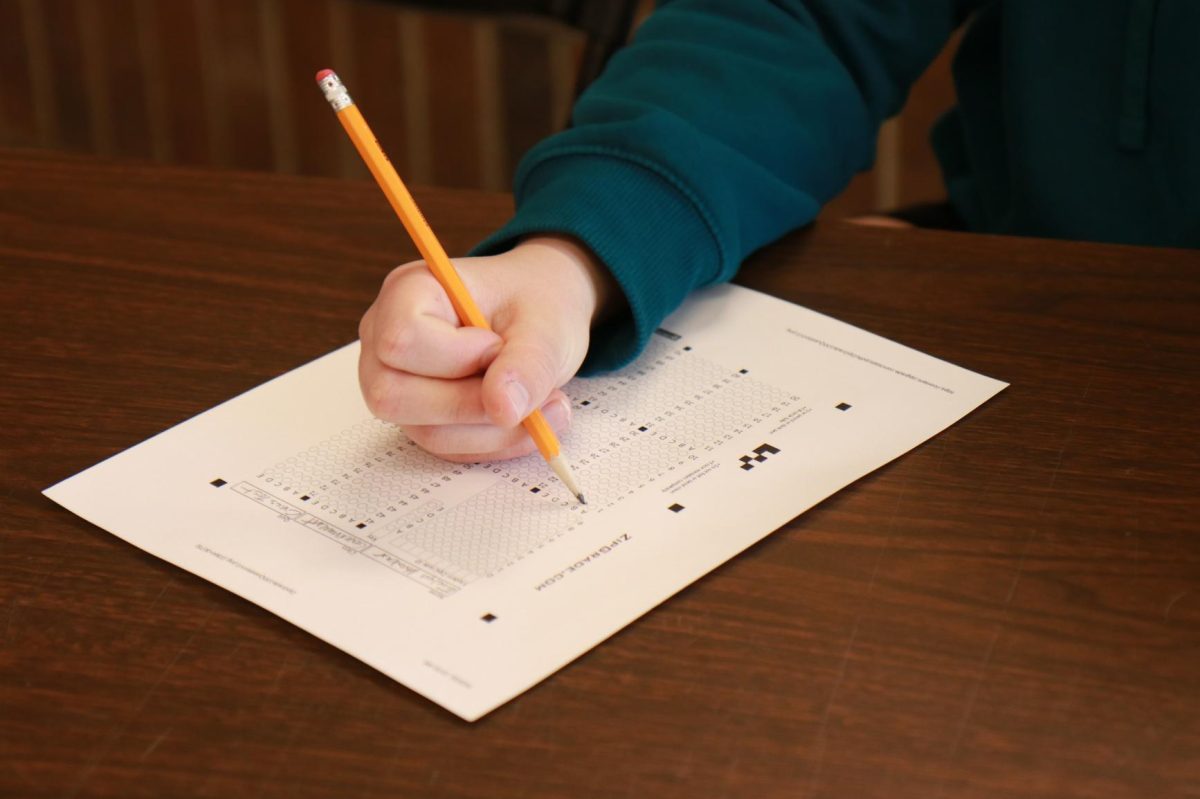What is FRC?
FIRST Robotics Competition (FRC) falls under the robotics organization FIRST and is considered the most advanced and complex of their three programs. FRC membership is limited to high school students, who are tasked to build industrial-size robots to compete alongside their alliance partners on a 27-foot by 54-foot playing field. Additionally, teams are pushed to raise funds and establish a brand under limited time and resources.
2024 Season breakdown
Each year, thousands of high school students across the country sit anxiously, waiting for the reveal of the seasonal FRC game. On Saturday, Jan. 6, 2024, FRC announced CRESCENDO (presented by Haas Game Animation), on par with FIRST’s 2023-2024 overall theme: art in STEM. Robots score orange donut-shaped pieces called “notes,” at different parts of the field and hang on a chain during the last 20 seconds of the match.
Meet Team 167 Children of the Corn
FRC team 167 Children of the Corn is a community-based team in the Iowa City area. Established in 1998, it is the oldest robotics team in Iowa and is still thriving in the STEM community today. To learn more about Children of the Corn and how to get involved, visit their website.
Madison Kriege coaches Children of the Corn, specializing in business logistics. Some of her responsibilities include award submissions, teams and judges prep and also outreach. Before coaching, Kriege was on an FRC team herself in high school, team 967 Linn-Mar. After graduating college, Kriege moved to the Iowa City area for work and discovered team 167 Children of the Corn.
When asked what makes the team unique, Kriege said, “We are a community team. We fall from a few different school districts. And I think that that creates a very unique dynamic. A lot of these students don’t know each other from outside of practice since they don’t go to the same schools. So this kind of becomes its own little community in the way that it functions.”
One of the most exciting parts of FRC robotics is the competition. Seeing the 120-pound robots in action and enjoying a change of environment is a common experience to look forward to. Kriege agrees and states that she also enjoys seeing the team’s hard work come together in the end. “I guess, on a big scale, [I like the] grandeur of events we play at, like the Union Dome. Or at arenas. So it’s a very exciting atmosphere, which is just a fun place to be for the week. But also like I watch our Impact Award students, which are equivalent to Inspire Award in FTC, spend months working on their presentation. So to finally like, see that in front of the judges, that’s one of my favorite parts of the season. See it all come together,” Kriege said.
Unlike FIRST Tech Challenge (FTC) robotics, FRC has no limit on how many students can be on a single team. This comes with a unique set of advantages and disadvantages. One advantage relates to judging. In FRC, presentations and matches run at the same time. Larger teams are able to break off into two subteams: a drive team and a presentation team. Finding enough people to fulfill those two separate duties can be challenging for smaller teams. “We had one year where we were rebuilding from COVID, made a small group. So our Drive team was also our presentation team. So in the middle of judging, there was some timing issues. We had to rearrange when our judging was to get around the field because the field was delayed. And then they suddenly magically caught up. So two of our presenters left in the middle of judging to go drive the robot. And the one student that was left did so well. But she’s like, all right, I guess it’s just me. The line delivery was beautiful. The judges were like, super chill about it,” Kriege said.
Since then, Children of the Corn has maintained a small-sized team. “We have 15 students on our roster. I would say 11 will go to competition this year, just because of availability and stuff. So we’re really small compared to the average team, which has some unique challenges but I also think we’re growing,” Kreige said.
2024 Season Progress
This year’s FRC game is more complex than others in recent years. There are many ways teams can rack up points in a match, scoring in multiple parts of the field. Kriege said, “ I think that this is one of those games that the parents watching it might have a harder time understanding the nuances of the challenge. Because you can pretty quickly see, you put the notes or the rings into miscellaneous parts of the field. But I don’t think that it’s all obvious. Like, we have the trap and the amplifier, so if you score in the amp on the low goal, then you have 10 seconds to score in the speaker, the higher goal, for extra points. And I think that that’s going to make a really big impact. But I don’t think from a spectator point you’re likely to notice.”
Teams compete at regional competitions throughout March before qualifying for the World Championship in April. Regional competitions can have upwards of 60 teams, decreasing the number of matches a single team plays. “This year, we are going to the Missouri regional for the first time. And it’s a smaller competition. There’s only 30 teams instead of 60. So that means that our robot will get to be in twice as many matches, and we’ll really get to test what it can do. I think that that’ll be an exciting new challenge,” Kriege said.
In addition to robot-based challenges, Children of the Corn faces challenges with team structure. Kriege said, “We’ve kind of broken out of our sub-team structure this year and really taken on more of a where-you-can-learn-it, where-you-can-be-helpful mentality. It’s an interesting challenge. We also this year had like six students interested in programming, which is the most we’ve ever had. Usually we’re trying to get someone to program the robot. So we saved up and bought computers this year, and are trying to find things for all of them to do. But it’s hard when you have one robot and a bunch of people that want to play with it.”
Tadamich Goto ’26 is the Head Programmer of the team and has been a part of Children of the Corn for two years. “In my freshman year, I watched a Youtube video on FRC, and basically went ‘robots cool, I wanna do that.’ Lo and behold, there was a local FRC team,” Goto wrote.
Like Kriege, Goto’s favorite part of FRC is the competition and seeing the team’s hard work finally come together and pay off. “My favorite part is the chaos of a full match in a regional. My favorite memory is when we won the Autonomous Award in the Iowa Regional, as I wrote the auto code that won us that award,” Goto wrote.
Though many students are excited about the new season, some feel the games are becoming repetitive. Goto wrote, “I feel like this game is kinda meh, it seems very similar to 2013 while having rules that are kinda stupid for various technical reasons.”
Even in their repetitiveness, though, the games are thrilling to watch. “I am looking forward to seeing endgames, as climbing endgames like this year are always spectacular to watch,” Goto wrote.
A big challenge that students who participate in robotics face is time commitment, especially in FRC. The season is much shorter and jam-packed than FTC. Students are expected to be in the lab several hours a week to have a robot intact. Additionally, teams struggle to find interested students in the community. “Our biggest struggle so far is the lack of member attendance, as many of the members who were in the team last season graduated, and we haven’t been successful with recruiting this year,” Goto wrote.
The game is released the first week of January. Then, teams have a 6-8 week build season before they attend regional competitions in March. If teams perform well and qualify, they attend the World Championship in Houston, Texas, at the end of April.
“The season so far has been hectic as due to limitations with resources, member attendance, design constraints, etc. We are massively behind schedule, putting us in crunch time,” Goto wrote. “Central Missouri will most likely be very chaotic and we won’t perform our best due to it being our first real competition with this specific bot, and the crunch time designs, but the Iowa Regional will most likely be much better due to just more time and experience.”
Spencer Thomas ’24 is the Head Builder of the team, a programmer and part of the business subteam. Thomas discovered Children of the Corn during his sophomore year at the West High Club Fair in 2021. He has been on the team for three and a half years now.
With such a complex game this year, teams are pushed to develop unique strategies to maximize their scores. “The game this year is very interesting, I am most looking forward to seeing how teams will strategize with amplification for point scoring, and how teams will work together in the endgame to climb onto the center stage,” Thomas wrote. However, with a complex game comes complex challenges. Teams must think outside of the box when fabricating a robot design. A variety of factors come into play, such as cost, material strength and construction time. “Our biggest struggle so far has been designing a climber that allows us to score into the raised trap during the endgame,” Thomas wrote.
To prepare for upcoming regional competitions, FRC teams typically attend local scrimmages. These scrimmages feature fewer teams than actual competitions and allow teams to measure their performance accurately on a full-sized playing field. “To prepare for our next regional, we have a scrimmage coming up next weekend in Des Moines, where we will be able to see how our robot deals with a full game field as opposed to our constructed field at our machine shop,” Thomas wrote.
Despite a hectic competition season, Children of the Corn is taking initiative to improve materials for the camps they host throughout the summer and school year. These camps engage kids who are interested in robotics and help them find a First Lego League team to join. “It’s been a fun project, especially since some of our students were in FLL early on. But it’s a big undertaking for a small team especially,” Kriege said.
As interest in robotics grows around Iowa City, FRC Children of the Corn is always looking for new members. Kriege said, “Our calendar is on our website. People are always welcome to come to the lab anytime. Even, you know, FTC people wrapping up their season. We have a decent amount of students that do both.”



